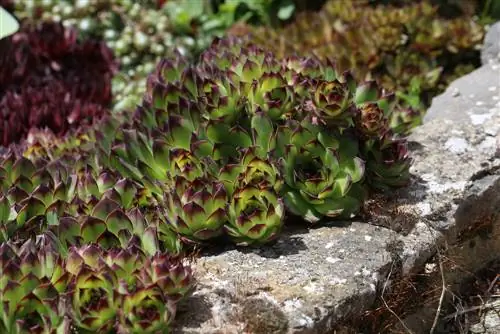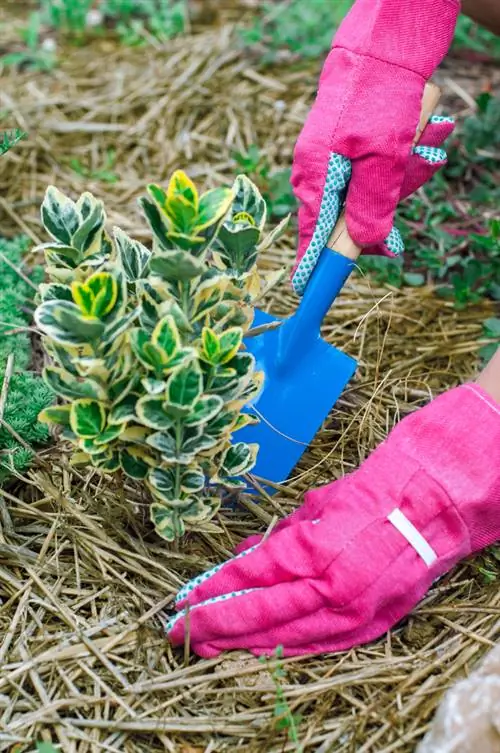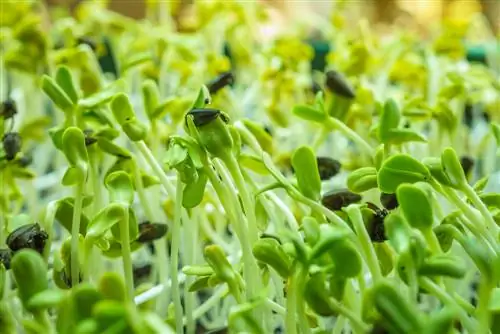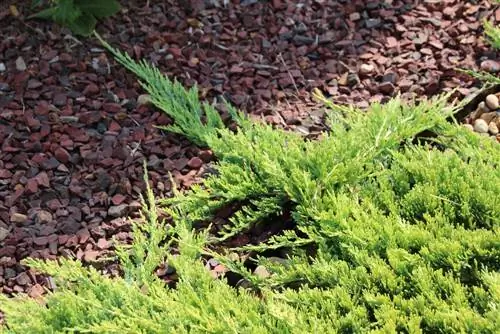- Author admin [email protected].
- Public 2023-12-25 17:45.
- Last modified 2025-01-23 11:22.
Creeping Günsel has earned a good reputation as a ground-covering perennial ace for low-light locations. In order for cultivation to be successful, the mint family rarely requires horticultural attention. The following answers to frequently asked questions provide clarity about all important measures.

What should you know about Creeping Günsel?
Creeping Günsel is a ground-covering mint family that is ideal for shady locations. The plant requires little care, but prefers constantly moist, nutrient-rich soil. A planting distance of 25 cm is recommended to achieve the desired dense carpet. Popular varieties include Rosewood, Rosea, Burgundy Glow, Elmblut and Stölzle.
Planting creeping guensel correctly
So that creeping Günsel fulfills its intended task as a ground cover and does not set out on a conquest through the garden, show the vigorous perennial its limits when planting it. You can do this by equipping the area to be greened with a root barrier made of sturdy geotextile. It is important to note that the ends of the material overlap so much that there are no gaps. In addition, the root barrier should protrude a few centimeters from the ground so that the runners do not climb over it. This precaution is particularly recommended if the bed borders a lawn.
Care tips
If Creeping Günsel finds a semi-shady to shady location with sufficiently moist and nutrient-rich soil, the care effort is reduced to a minimum. The most important aspects at a glance:
- Keep the soil constantly moist
- An organic starter fertilization in March
- Cut off wilted inflorescences before seeds form
- Pruning close to the ground or mowing with a lawnmower in early spring
- When there is a clear frost, water on mild days
Winter protection is only recommended for potted plants. Wrap the containers in bubble wrap or fleece to prevent the root ball from freezing.
Which location is suitable?
The speci alty of Kriechendem Günsel lies in the carpet-like greening of small and large areas in low-light locations. The wild perennial achieves this masterpiece perfectly in semi-shady to shady beds under trees or on the edge of the woods. The forest and meadow perennial also thrives in sunny locations as long as it can extend its roots into fresh, moist soil.read more
The correct planting distance
So that the wild perennial can show off its strengths as a robust ground cover, a well-considered planting distance is important. If the plants are too close together, their runners will crowd each other. If the distance is too great, it will take an unnecessarily long time until the densely woven carpet of flowers and leaves is created. In practice, a planting distance of 25 cm has proven to be ideal. This means that you plant 10 to 16 creeping Günsel per square meter.
What soil does the plant need?
The forest and meadow perennial favors a loose, humus-rich soil, rich in valuable nutrients and with a constant moisture content. Where the substrate in the bed and pot does not come close to the ideal, soil additives compensate for any deficiencies. Enrich soil that is too sandy with mature compost, leaf mold, bark humus, while compacted, heavily clayey substrate is loosened with sand.
When is flowering time?
The distinctive lip blossoms shine at us in densely packed tiers along the flower stalks from April to June. While the pure wild species delights with shades of blue in every conceivable shade, hybrids stand out with white, pink or violet flowers. This means that creative gardeners are free to plant a colorful ground cover using a mixed planting of varieties.read more
Cutting creeping guensel correctly
Cut off the withered inflorescences as soon as possible to save creeping Günsel the energy-sapping growth of the four-divided herbaceous fruits. This measure contributes significantly to a long plant life. The wintergreen foliage adorns the garden without plants during the cold season, only to be removed shortly before new growth in early spring. To make things easier, set the lawn mower to the highest setting and mow off the remaining parts of the plant. Last but not least, you can use scissors to keep creeping gunsel's urge to spread under control. In autumn or spring, simply cut off runners that are too long.
Creeping Guensel watering
Regardless of its robust constitution, creeping Günsel loves balanced soil moisture. The ground cover does not like swings in one direction or the other. Always water the perennial when the top 2 cm of the substrate has dried. Ideally, you should use soft rainwater and normal tap water alternately to meet the need for a slightly acidic to neutral pH value.
Fertilize creeping guensel properly
If the soil conditions meet the requirements, the nutrient supply is limited to initial fertilization in March. If a dense network of strong runners has already developed, incorporating compost with a rake could cause damage. It is therefore advisable to fertilize creeping Günsel with nettle or comfrey manure or a commercially available liquid preparation. If deficiency symptoms appear in the form of discolored leaves or stunted flowers, repeat the application of fertilizer in May.
Wintering
Creeping Günsel can withstand bitter frost up to -23 degrees Celsius. This means there is no need to take precautions for overwintering in the bed. Deviating from this, we recommend light winter protection for Günsel in a bucket or balcony box. If you would like to see the up to 50 cm long tendrils dangling casually and elegantly from a planter, you should protect the root ball from frost in winter. Cover the pot or flower box with foil or jute. Regardless of where creeping Günsel spends the winter, the leafy plant should continue to be watered when it is dry.
Propagate creeping guensel
Where the spread of creeping gunsel is limited by cutting back the runners, you have plenty of material for propagation on hand. Cut into segments 10 to 15 cm long, plant the root cuttings in a semi-shady to shady location in compost-enriched soil, where they will root as if by magic. In addition, dividing the root ball is recommended as the simplest method of breeding. In contrast, sowing presents a horticultural challenge because the seeds are cold germinators.
Is creeping guensel poisonous?
In folk medicine, creeping gunsel is called gargle herb. Its valuable ingredients have long qualified the mint family as a medicinal plant for external and internal use. For example, if a tea is made from the leaves and flowers, it relieves painful angina or torturous intestinal problems. To this day, the ingredients of Ajuga reptans are used in the pharmaceutical industry. Therefore, there can be no question of a toxic danger.
Beautiful varieties
- Rosewood: The variety impresses with elegant, shiny, red-brown leaves under blue lipped flowers
- Rosea: Dainty flowers in delicate pink transform the bed into a spring dream
- Burgundy Glow: The plant does what the variety name promises with shiny foliage in a mix of pink, white and gray-green
- Elmblut: Magnificent creeping bird with ebony leaves and blue flowers
- Stölzle: shade perennial in a class of its own with shimmering purple-pink foliage and blue flowers






